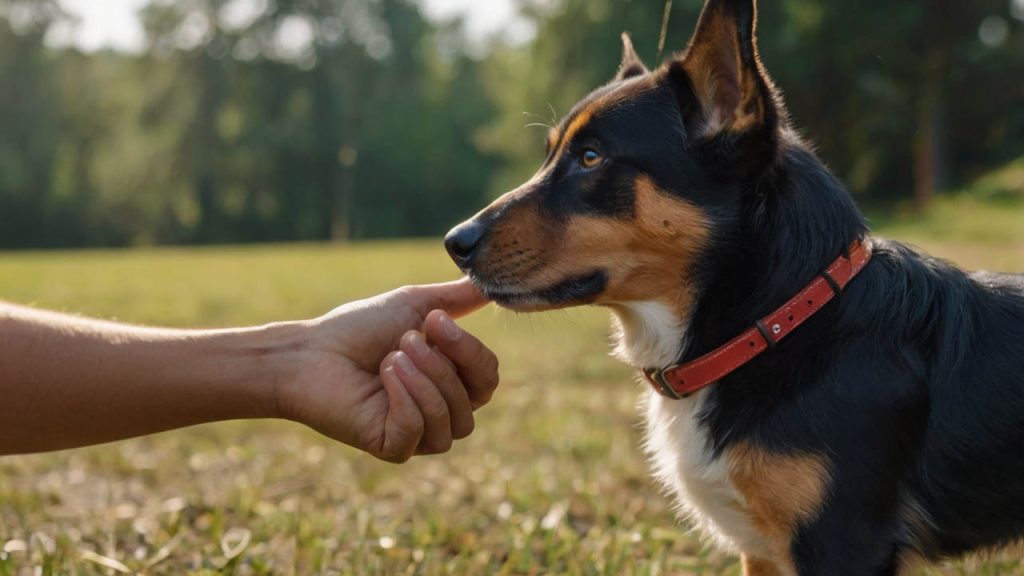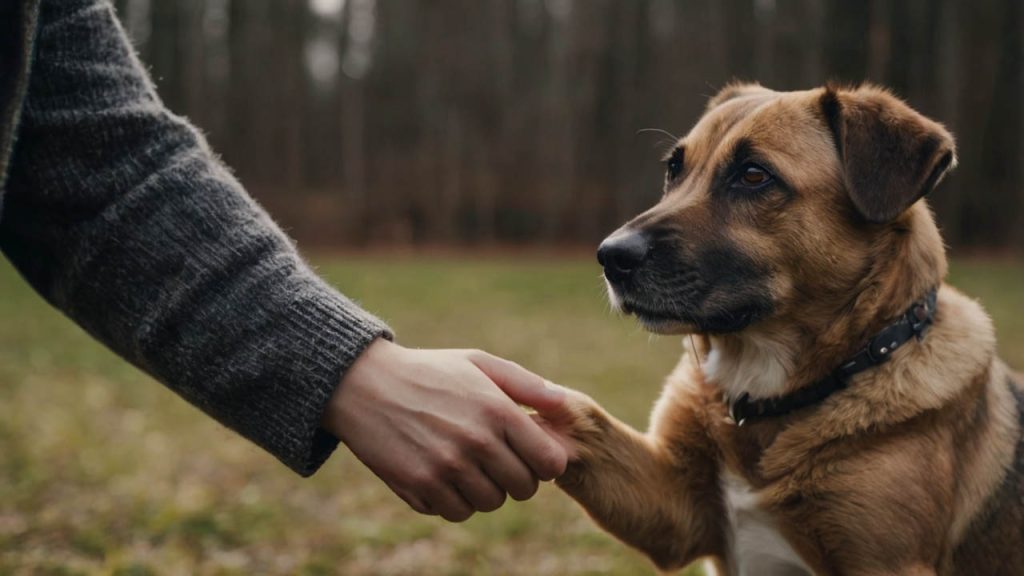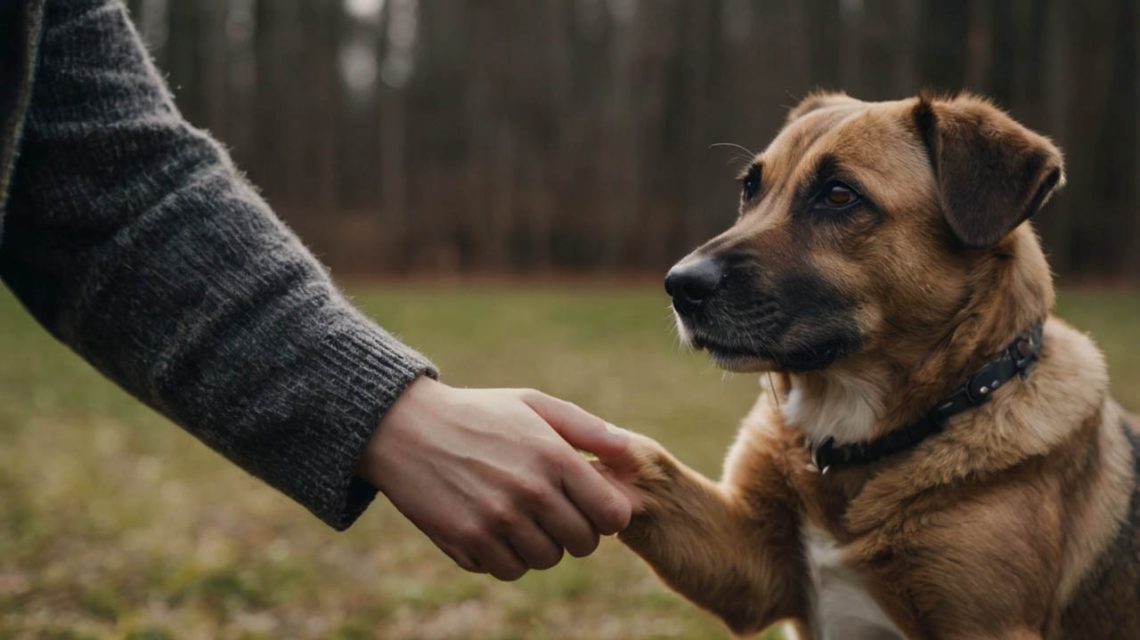Introduction: Master the Art of Teaching Your Dog to Shake Hands
Understanding how to teach a dog to shake hands represents one of the most rewarding training milestones for pet owners worldwide. Every year, millions of dog owners search for effective methods to teach this charming trick, and research from the American Kennel Club demonstrates that positive reinforcement training achieves 90-95% success rates when applied consistently. Therefore, learning how to teach a dog to shake hands not only strengthens your bond but also establishes foundational obedience skills applicable to advanced training.
Most importantly, mastering how to teach a dog to shake hands requires understanding canine learning psychology, proper timing, and patience. Furthermore, this simple trick provides mental stimulation that prevents destructive behaviors while showcasing your dog’s intelligence. Subsequently, the techniques you’ll discover create lasting behavioral patterns that enhance overall communication between you and your furry companion.
Understanding Canine Learning Before Teaching Shake Hands
Why Dogs Can Learn to Shake Hands Successfully
Before implementing how to teach a dog to shake hands, understanding canine cognitive abilities proves essential. Dogs possess intelligence comparable to human toddlers aged 2-3 years according to Stanley Coren’s research. Moreover, they excel at associative learning, connecting specific actions with rewards. Consequently, trick training capitalizes on these natural learning mechanisms.
Dogs communicate naturally through body language and paw gestures. Adult wolves and wild dogs use paw movements to initiate play and establish social hierarchies. Subsequently, teaching the shake command taps into these instinctive behaviors, making learning more intuitive.
According to Cornell University’s College of Veterinary Medicine, dogs form memory associations within 3-5 repetitions when proper reinforcement occurs. Furthermore, neural pathways strengthen with each successful repetition, transforming conscious actions into automatic responses. Therefore, consistent practice proves more effective than lengthy, infrequent training sessions.

Environmental Factors When Teaching a Dog to Shake Hands
Creating optimal learning conditions significantly impacts success when discovering how to teach a dog to shake hands:
Distraction-free environments allow complete focus during initial training. Choose quiet rooms away from other pets, children, or external noises. Fleas and other discomforts should be addressed first—learn natural solutions through guides like how to get rid of fleas on dogs naturally. Therefore, comfortable dogs learn faster.
Proper timing maximizes attention and retention. Train when dogs are alert but not overly excited—typically before meals when food motivation peaks. Moreover, avoid training after exercise when energy levels drop naturally.
Comfortable temperature maintains focus throughout sessions. Dogs overheat quickly, especially long-haired breeds. Consequently, moderate temperatures between 65-75°F create ideal learning conditions without physical discomfort distractions.
How to Teach a Dog to Shake Hands: Step-by-Step Method
Preparation Phase for Teaching Shake Hands
Gathering proper supplies before learning how to teach a dog to shake hands ensures smooth training progression:
High-value treats motivate consistent participation. Choose small, soft treats easily consumed quickly—chicken pieces, cheese cubes, or commercial training treats work excellently. Furthermore, cut treats into pea-sized portions preventing overfeeding during multiple repetitions.
Clicker training tools provide precise timing markers. While optional, clickers mark exact moments of correct behavior. Moreover, research shows clicker-trained dogs learn 30% faster than verbal-marker training alone.
Comfortable positioning prevents physical strain. Sit on the floor or low chair at your dog’s eye level. Additionally, this position reduces intimidation for smaller or anxious dogs.
Mental readiness requires your focused attention. Eliminate distractions like phones or television. Therefore, your dog receives undivided attention, accelerating learning through heightened engagement.
The Natural Paw-Lifting Technique
The most effective approach when discovering how to teach a dog to shake hands utilizes natural behaviors:
Step 1: Establish sitting position. Begin every training session with your dog in a calm sit. Hold a treat in your closed fist near their chest level. Furthermore, this creates anticipation and focus necessary for learning.
Step 2: Wait for natural paw movement. Dogs instinctively paw at closed fists containing treats. The moment your dog’s paw lifts—even slightly—immediately say “shake” or “paw” clearly. Moreover, timing proves critical; rewards must occur within 0.5 seconds of the action.
Step 3: Capture and reward immediately. As the paw touches your hand, open your palm, allow brief contact, then deliver the treat with enthusiastic praise. Subsequently, this sequence creates positive associations between the action, command, and reward.
Step 4: Repeat with consistency. Practice 5-10 repetitions per session, twice daily. Research indicates 14-21 days of consistent practice establishes permanent behavioral patterns. Therefore, patience and regularity outweigh intensive marathon sessions.
Advanced Training Techniques for Shake Hands
Once basic responses emerge when learning how to teach a dog to shake hands, enhance reliability through progressive training:
Extend duration gradually. Initially accept momentary paw contact. After 10-15 successful repetitions, hold their paw 2 seconds before rewarding. Furthermore, gradually increase to 5 seconds over subsequent sessions. This builds patience and impulse control.
Introduce verbal cues exclusively. Eliminate treat visibility by keeping rewards hidden. Present only your empty hand while saying “shake.” Consequently, dogs learn to respond to verbal commands rather than visual treat cues exclusively.
Practice variable reinforcement. Once reliability reaches 80%, reward every third successful shake rather than each one. Moreover, intermittent reinforcement creates stronger behavioral patterns than constant rewards according to behavioral psychology studies.
Add different contexts. Train in various locations—backyard, park, friend’s house. Additionally, practice with different family members. Therefore, dogs generalize the command rather than associating it with single contexts only.

How to Teach a Dog to Shake Hands Through Positive Reinforcement
The Science of Reward-Based Training
Understanding reinforcement psychology enhances success when mastering how to teach a dog to shake hands:
Dopamine release occurs during positive training experiences. When dogs receive rewards, their brains release this “feel-good” neurotransmitter. Subsequently, they actively seek opportunities to repeat rewarded behaviors. Furthermore, this neurological response explains why positive methods outperform punishment-based approaches consistently.
Marker timing determines learning speed. According to Association of Professional Dog Trainers guidelines, rewards delivered within 0.5 seconds create strongest associations. Clickers provide precise marking impossible with verbal praise alone. Moreover, delayed rewards confuse dogs about which specific action earned the treat.
Reward value hierarchy impacts motivation levels. Dogs work harder for high-value rewards like chicken or cheese versus standard kibble. Therefore, save premium treats exclusively for training sessions, maintaining their special status.
Consistency across handlers prevents confusion. All family members must use identical commands and techniques. Consequently, dogs receive clear, unified messages rather than conflicting signals that slow learning.
Treat Reduction Strategies
Permanent treat dependency shouldn’t result from learning how to teach a dog to shake hands:
Phase 1: Constant reinforcement (Weeks 1-2). Reward every successful shake during initial learning. This establishes the basic behavior pattern through consistent positive feedback. Furthermore, high reward frequency maintains enthusiasm during challenging early stages.
Phase 2: Intermittent reinforcement (Weeks 3-4). Reward every 2nd or 3rd correct response once reliability exceeds 70%. Moreover, unpredictability actually strengthens behaviors according to operant conditioning principles. Dogs continue performing, unsure which attempt earns rewards.
Phase 3: Variable rewards (Week 5+). Randomly reward between 25-50% of correct responses. Substitute treats occasionally with verbal praise, petting, or toy rewards. Subsequently, dogs maintain performance without constant food motivation.
Maintenance phase (Ongoing). Periodically reward shake commands to maintain sharp response. Additionally, incorporate the trick into daily routines like greeting rituals, keeping skills fresh without dedicated training sessions.
Common Mistakes When Teaching a Dog to Shake Hands
Training Errors That Slow Progress
Avoiding pitfalls accelerates success when learning how to teach a dog to shake hands:
Inconsistent commands confuse dogs significantly. Choose one word—”shake,” “paw,” or “hand”—and use exclusively. Furthermore, hand signals should remain identical across repetitions. Therefore, mixing terminology forces dogs to learn multiple commands for one action unnecessarily.
Rushing the learning process creates frustration for both parties. Dogs require time to form neural pathways connecting actions with commands. Moreover, expecting perfect performance within days sets unrealistic expectations. Consequently, celebrate small progress rather than demanding immediate mastery.
Training during inappropriate times reduces effectiveness dramatically. Tired, hungry, or overstimulated dogs cannot focus properly. Additionally, training immediately after meals when dogs feel sluggish produces poor results. Therefore, scheduling proves as important as technique.
Punishing incorrect responses damages trust and enthusiasm. When dogs don’t understand, simply withhold rewards and try again. Furthermore, punishment creates fear associations with training, making future learning difficult. Subsequently, maintaining positive attitudes throughout all sessions proves essential.
Physical and Health Considerations
Certain factors impede progress when discovering how to teach a dog to shake hands:
Joint problems make paw lifting painful. Arthritis, hip dysplasia, or previous injuries cause discomfort when raising front legs. Moreover, senior dogs often experience reduced flexibility. Therefore, veterinary clearance ensures training won’t cause physical harm.
Breed-specific challenges require adapted approaches. Brachycephalic breeds like Bulldogs tire quickly, necessitating shorter sessions. Additionally, giant breeds like Great Danes may struggle with coordination during puppyhood. Consequently, adjusting expectations to individual capabilities prevents frustration.
Attention span limitations vary by age. Puppies under 6 months maintain focus only 5 minutes maximum. Furthermore, senior dogs may lose concentration faster than young adults. Therefore, session length should match developmental stage rather than following rigid guidelines.
Medical conditions affecting learning ability need professional assessment. Cognitive dysfunction, hearing loss, or vision problems significantly impact training success. Moreover, underlying health issues causing discomfort distract from learning. Subsequently, addressing health first optimizes training outcomes.
How to Teach a Dog to Shake Hands: Troubleshooting Guide
When Dogs Won’t Lift Their Paw
Specific strategies overcome resistance when mastering how to teach a dog to shake hands:
Gentle paw tapping encourages lifting in reluctant dogs. Lightly touch the back of their paw while saying “shake.” The moment they lift even slightly, immediately reward. Furthermore, most dogs instinctively raise paws when touched, making this technique highly effective.
Higher-value treats increase motivation dramatically. If standard treats aren’t working, try cooked chicken, hot dogs, or freeze-dried liver. Moreover, some dogs work harder for toys than food. Therefore, experiment with various reward types matching individual preferences.
Shorter training bursts maintain engagement better than long sessions. Try 2-minute intervals with play breaks between. Additionally, ending sessions before frustration develops keeps training enjoyable. Consequently, dogs eagerly anticipate future sessions rather than dreading them.
Alternative starting positions help some dogs understand faster. Instead of sitting, try having your dog stand initially. Furthermore, capturing natural paw movements during play sometimes works better than structured training. Therefore, flexibility in approach accommodates different learning styles.
Addressing Over-Excitement Issues
Managing enthusiasm challenges when learning how to teach a dog to shake hands:
Pre-training calm exercises reduce hyperactivity before sessions. Practice sit-stays or down-stays for 2-3 minutes first. Moreover, this mental warm-up establishes focused mindsets conducive to learning. Subsequently, dogs enter training mode rather than play mode.
Lower-energy rewards prevent escalating excitement. Use calm verbal praise rather than animated celebration initially. Additionally, deliver treats gently instead of tossing them excitedly. Therefore, energy levels remain manageable throughout training.
Incorporate impulse control within shake training. Require 3-second waits before rewarding. Furthermore, dogs learn patience alongside the physical trick. Consequently, overall obedience improves beyond just the shake command.
Ignore jumping or pawing that isn’t the commanded shake. Turn away immediately when dogs become unruly. Moreover, only reengage when calmness returns. Therefore, dogs learn controlled behavior earns attention while chaos doesn’t.
Advanced Variations: How to Teach a Dog to Shake Hands
Progressive Skill Development
Expanding beyond basics when mastering how to teach a dog to shake hands maintains engagement:
“Other paw” command adds impressive variation. Once one paw responds reliably, teach the opposite using different cues. Hold your opposite hand out while saying “other paw.” Furthermore, dogs must discriminate between commands, providing excellent mental stimulation. This variation demonstrates advanced training and cognitive flexibility.
High-five transformation elevates the shake vertically. Gradually raise your hand position over multiple sessions. Moreover, dogs naturally adjust reach upward following your hand. Subsequently, what began as shake becomes an entirely different-looking trick.
Wave goodbye variation extends from shake naturally. Once paw-lifting is reliable, stop catching their paw. Instead, move your hand in waving motions as their paw rises. Furthermore, dogs begin mimicking the movement. Therefore, one foundational behavior spawns multiple impressive tricks.
Dual-paw shake challenges coordination significantly. Teach each paw separately first using distinct commands. Subsequently, request both simultaneously while saying “both paws.” Moreover, this advanced variation impresses audiences while providing substantial mental exercise.
Combining Shake with Other Commands
Creating sequences enhances training when perfecting how to teach a dog to shake hands:
Sit-shake-down progression builds complex behavior chains. Request sit, then shake, then down in rapid succession. Furthermore, chaining commands improves impulse control and focus dramatically. Subsequently, dogs learn to anticipate sequences rather than requiring individual prompts.
Greeting routine integration makes training functional. When visitors arrive, command sit, then shake as an appropriate greeting. Moreover, this replaces jumping behavior with polite alternatives. Therefore, training solves behavioral problems while teaching entertaining tricks.
Distance shake challenges test command reliability. Gradually increase your distance from your dog before giving the shake command. Additionally, dogs must hold the position longer while awaiting your approach to complete the handshake. Consequently, this variation enhances duration and control simultaneously.
Distraction-proofing protocols ensure performance anywhere. Practice shake commands in progressively busier environments—quiet rooms, backyards, parks, pet stores. Furthermore, gradually introduce distractions like other dogs or food bowls nearby. Therefore, commands remain effective regardless of environmental temptations.
Age-Specific Approaches: How to Teach a Dog to Shake Hands
Training Puppies to Shake Hands
Special considerations apply when teaching how to teach a dog to shake hands to young dogs:
Shorter attention spans require 3-5 minute sessions maximum. Puppies under 6 months cannot maintain focus longer. Moreover, multiple daily micro-sessions outperform single lengthy ones. Subsequently, training integrates naturally into daily routines rather than demanding dedicated time blocks.
Socialization integration combines shake training with people exposure. Have puppies shake hands with various people during their critical socialization period (8-16 weeks). Furthermore, this builds confidence with strangers while teaching the trick. Therefore, behavioral and training goals align efficiently.
Gentler corrections suit puppies’ developing confidence. Never scold young dogs for not understanding. Additionally, excessive treat motivation can upset developing digestive systems. Consequently, balance food rewards with play and praise more than with adult dogs.
Foundation building establishes long-term success. Puppies learning shake develop neural pathways facilitating future training. Moreover, early positive experiences create enthusiastic learners for life. Therefore, puppy training investments yield decades of benefits.
Adult Dog Training Strategies
Mature dogs bring advantages when discovering how to teach a dog to shake hands:
Longer focus periods allow 10-15 minute sessions. Adult dogs maintain concentration better than puppies. Furthermore, they often learn sequences faster due to existing training foundations. Subsequently, progress typically accelerates compared to puppy training timelines.
Previous training experience either helps or hinders. Dogs with positive training histories learn new tricks eagerly. Conversely, dogs with punishment-based pasts may show hesitation or fear. Moreover, patience proves essential when overcoming negative associations. Therefore, adapting to individual backgrounds optimizes success rates.
Physical prime enables reliable performance. Most dogs aged 1-7 years possess optimal coordination and energy. Additionally, they lack age-related joint issues or cognitive decline. Consequently, this represents the ideal training window for complex tricks.
Habit modification requires extra patience. Adult dogs may already have established greeting behaviors like jumping. Furthermore, shake training must replace rather than supplement existing patterns. Therefore, consistency becomes even more critical when retraining adults.
Senior Dog Considerations
Special care applies when teaching how to teach a dog to shake hands to older dogs:
Shorter, gentler sessions accommodate reduced stamina. Senior dogs tire quickly both mentally and physically. Moreover, 5-minute sessions twice daily prove optimal. Subsequently, learning still occurs without overtaxing aging bodies or minds.


